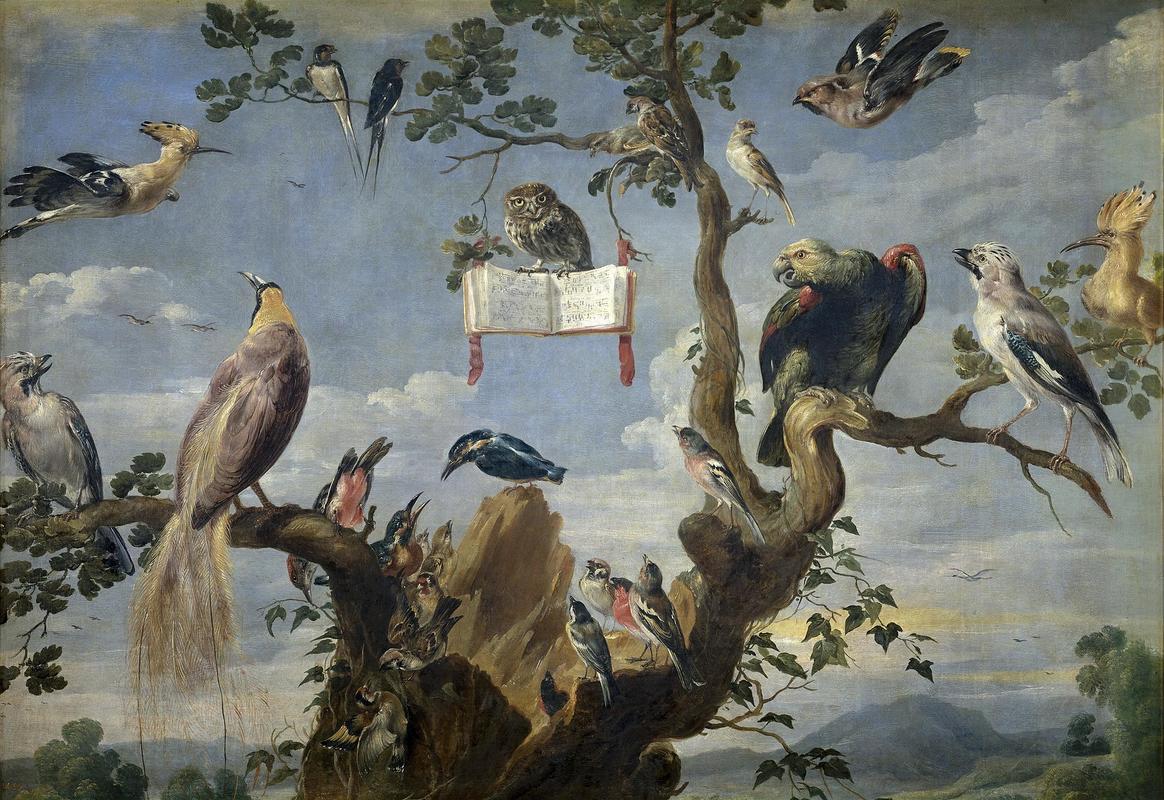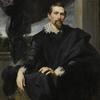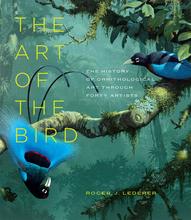More about Concert of Birds
- All
- Info
- Shop

Contributor
The Concert of Birds by Frans Snyders is one in a series of five paintings with the same title, each featuring a diverse assembly of birds.
In this case, naturally, they're reading French sheet music - because they're not into improvisation, and they get cold feet when you put them on the spot. These images were very popular, as they made a visual illustration of the Dutch colloquialisms "Every bird sings the way the Creator intended" (literally, "the way it was baked," elck vogeltge singt soo't gebeckt is), and "Every bird sings with its own beak."
Under the rule of Archduke Albert VII of Austria and Isabella Clara Eugenia, of the House of Habsburg, this "everything in its place" message served a central political function. The conductor of the birds is the only one staring directly at us: the owl who is holding the music. Clearly, for the owl, this is very serious business.
For a 390-year-old painting, this work has an unusually consistent provenance. The original owner, the 1st Marquis of Leganés, Diego Messía Felípez de Guzmán, who owned four different bird concerts, gave it to King Philip IV of Spain who kept it in the Real Alcázar in Madrid until Spain built the Museo Nacional del Prado, where it keeps company with hundreds of royal-collection siblings.
Allegorically, there are a few sources for this image. First, the painting draws upon the Latin fable of Aesop, "Noctua et Quercus," or "The Owl and the Birds," in which the owl warns the other birds to prevent the growth of acorns and flax, which the humans will use to catch them, and adds that an approaching hunter has arrows with bird feathers that can travel faster than the birds themselves. The birds consider Owl to be a Chicken Little-type, dismiss her as paranoid, and subsequently suffer the consequences. In Snyders' work, the birds look at the owl, who holds the information in her claws. In Ancient Rome, the owl was the sign of Athena, who epitomized wisdom and vigilance, as in Aesop. Ovid, Virgil, and several American indigenous cultures view the owl as an omen of tragedy and misfortune.
Secondly, this work draws on the Abrahamic faiths, in which King Solomon can understand the language of the birds, ravens brought food to the prophet Eliyahu, and in some Latin cultures, Mary is associated with birds. Francis of Assisi, according to Catholic tradition, inherited King Solomon's unusual talent and is another source for this work.
Sources
- Colomer, José Luis. Arte y diplomacia de la monarquía hispánica en el siglo XVII. Madrid, Villverde, 2003.
- Goddard, Burton L. Animals and Birds of the Bible. Lafayette, IN: Sovereign Grace Publishers, 2007.
- Lederer, Roger J. The Art of the Bird: The History of Ornithological Art through Forty Artists. Chicago: University of Chicago Press, 2019.
- Petrova, Svetlana. Fat Cat Art: Famous Masterpieces Improved by a Ginger Cat with Attitude. New York: Penguin, 2015.
- Puente, Teresa. "Virgin Mary rituals spread hope among Mexico faithful." Chicago Tribune, Nov. 24, 2001, https://www.chicagotribune.com/news/ct-xpm-2001-11-24-0111240070-story….
- Société pour le progrès des études philologiques et historiques, Fondation universitaire de Belgique, Belgium. Ministère de l'éducation nationale, Belgisch tijdschrift voor philologie en geschiedenis, Volume 80, Parts 3-4. Bruxelles: Fondation universitai
- "The Owl and the Birds." Fables of Aesop, Mar. 27, 2017, https://fablesofaesop.com/owl-birds.html.












